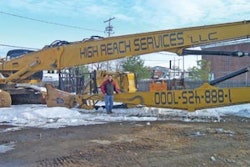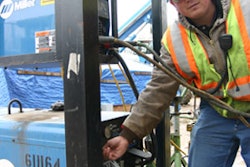In a tour-de-force opinion, the court addressed no fewer than nine separate contractual disputes stemming from a prime contractor's termination of a subcontractor.
The termination of a construction contract presents a multifaceted and usually chaotic experience for all parties involved. Any litigation resulting from that termination is often no different, as the recent court decision in LBL Skysystems (USA), Inc. v. APG-America, Inc., No. 02-5379, 2006 WL 2490497 (E.D. Pa. Sept. 6, 2006) demonstrates. In a tour-de-force opinion, the Federal District Court for the Eastern District of Pennsylvania addressed no fewer than nine separate contractual issues stemming from a prime contractor's termination of a subcontractor. Many of these issues have application beyond the termination context. This article highlights some of the more important points discussed in the court's lengthy opinion.
A copy of the Court's opinion is available here: http://www.paed.uscourts.gov/documents/opinions/06D1135P.pdf .
LBL Skysystems (LBL) contracted with U.S. Airways to construct the perimeter wall of a new terminal at the Philadelphia International Airport. LBL subcontracted insulated metal panel work valued at just under $10 million to APG-America (APG). In April 2002, APG challenged the scope of its work, claiming it was not responsible for support steel work in a certain area of the Project. Although LBL disputed APG's contention, it passed the claim through to U.S. Airways. U.S. Airways refused the claim, and threatened LBL with default if APG failed to perform the work. LBL relayed U.S. Airways' decision to APG. APG responded by reducing its on-site workforce significantly. Following up on a previously issued notice of default, LBL terminated APG for its refusal to perform the work.
LBL then sued APG to recover LBL's cost to complete APG's work. LBL also sued the surety on APG's performance bond, Sentry Select Insurance Company (Sentry). Sentry had concluded APG was not in default and refused to complete the work under the bond. In a previous ruling, the court had found LBL's termination of APG proper. APG then challenged the appropriate amount of damages to LBL in its cost to complete. The subcontract required that any completion costs be offset by the unpaid balance of the subcontract price. APG claimed entitlement to contract price increases, based on some of the over 3800 change order requests submitted on the Project. If valid, these contract increases would further offset LBL's cost to complete.
In the first two contested change order requests, APG sought approximately $550,000 for canopy work in two areas of the Project. At a pre-project meeting, APG disputed that these areas were within its scope of work, and highlighted these areas on the architectural drawings. LBL responded with a "Letter of Intent" stating LBL's position that APG's scope encompassed this work. APG again disputed this position with several telephone calls and an e-mail. Despite the fact the parties signed the subcontract after these back-and-forth discussions, the subcontract incorporated the "Letter of Intent" by reference. The court held that, by signing the subcontract with this reference, APG contractually bound itself to LBL's position on the scope issue. The court noted that APG meticulously had "redlined" other areas of the subcontract, but had not deleted the reference to the "Letter of Intent."
In its next claim, APG sought to litigate the value of several change order requests included in a "Global Settlement" entered into between LBL and U.S. Airways after APG's termination. In negotiating this settlement, LBL submitted nearly $12 million in claims to U.S. Airways. More than half of this amount came from change orders requested by APG. LBL and U.S. Airways eventually agreed to a total settlement of all the issues outstanding at that time for a price of $3.3 million. At U.S. Airways' insistence, APG had been excluded from these negotiations.
APG protested its exclusion from these meetings and sought to recover the additional, unapproved amounts of its change order requests from LBL. Again, the court found in favor of LBL. Essentially, the court held that APG could not challenge the Global Settlement amount because APG's own conduct had forced LBL to enter that settlement. U.S. Airways had declared LBL in default, based on APG's failure to perform its work. As a result, U.S. Airways had ceased payments to LBL. Moreover, U.S. Airways positioned the Global Settlement as LBL's only opportunity to obtain an extension of contract time and avoid imposition of $12,000 per day in liquidated damages. The court found that this "severe financial crisis" forced LBL's hand in entering the settlement. Moreover, the court construed the Global Settlement as a legally required attempt by LBL to mitigate its own damages stemming from APG's breach of contract. Finally, the court pointed out that the prime contract - incorporated into the subcontract by reference - rendered U.S. Airways' decisions on subcontractor change order requests final and binding.
After addressing some minor issues, the court turned to another of APG's primary claims for contract price increases. APG maintained that LBL failed to submit numerous valid change order requests to U.S. Airways for decision. LBL did not deny this, and did not contest its general duty to submit change order requests to U.S. Airways. Instead, LBL contended that APG waived these claims by failing to comply with contractual time limitations for the submission of change order requests.
The subcontract required APG to submit all requests for changes to LBL within five business days of the time APG learned of the basis for the claim. Many of APG's change order requests failed to meet this standard. APG submitted some over a year after the relevant change occurred. However, during the course of the Project, LBL never rejected an APG change order request as untimely. In fact, LBL and APG had held a meeting to discuss the slow processing of change order requests. At that meeting, LBL directed APG to price and submit all potential change orders, without any reference to when the changes may have occurred.
This time, the court accepted APG's position. The court found that LBL and APG had either waived or mutually modified the contractual provisions governing notices of change. The court held that the parties' course of conduct revealed a clear intent to not enforce the timeliness requirements strictly.
Finally, the court rejected APG's assertion that LBL had produced insufficient evidence of LBL's cost to complete. APG claimed LBL had failed to segregate work in APG's scope from LBL's own scope when tracking costs following the termination. LBL squarely contradicted this assertion, proving that it had assigned a new, separate "project number" for APG's work, and had tracked costs accurately and consistently.
The court's holdings on the issues between LBL and APG offer numerous lessons for contractual relations on any project, not just one which has deteriorated to the point of termination. The ruling on APG's claim for canopy work emphasizes the importance of thoroughness when reviewing contractual terms. Had APG reviewed the incorporation by reference of other documents with the same precision it utilized in addressing the remainder of the subcontract, it may have curtailed LBL's eventually successful attempt to cement LBL's own position contractually. Similarly, it appeared APG failed to consider the contractual provision placing the fate of its outstanding change order requests in the hands of LBL and U.S. Airways when it elected to demobilize from the job.
On the other hand, APG - and other contractors - could take some solace from the court's holding on the notice issue. Obviously, compliance with contractual requirements for providing notice of changes or claims is a contractor's best course of action. Failing that, however, the court recognized that project realities often result in lax enforcement of such clauses. Finally, LBL's diligence in tracking and segregating costs fended off APG's challenge to those figures.
Author's Bio:
David Wonderlick is an associate with the construction law firm of Watt, Tieder, Hoffar & Fitzgerald, L.L.P. He concentrates his practice on construction litigation regarding both public and private projects. Previously, he was an associate in the construction practice group of a large Philadelphia law firm, representing contractors, subcontractors and developers. He is a summa cum laude graduate of Susquehanna University and a graduate of William & Mary Law School, where he was Managing Editor of the William & Mary Law Review.


















